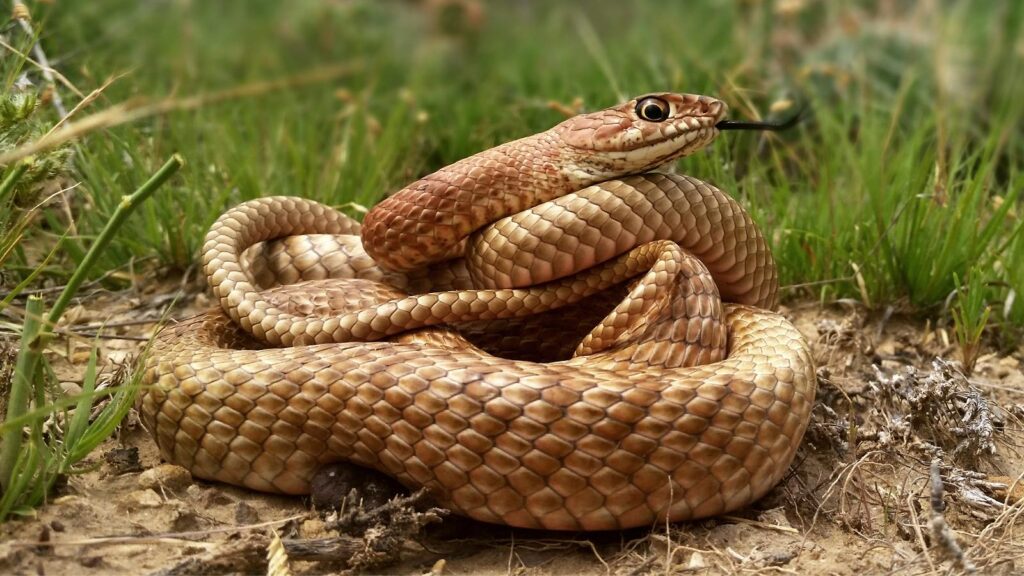Table of Contents
ToggleIntroduction

With their slithering motion and enigmatic presence, snakes have often been associated with mystery and fear. One common question that intrigues many is whether snakes are more active during the night. This inquiry delves into the nocturnal behavior of snakes Do Snakes Come Out At Night Time? Exploring their habits, ecological adaptations, and the factors influencing their activity patterns. Understanding when and why snakes emerge at night unveils a deeper insight into their fascinating world.
Snakes, being ectothermic creatures, rely on external temperatures to regulate their bodily functions. Nocturnal activity offers several advantages for these cold-blooded reptiles. The cooler nighttime temperatures often provide a more favorable environment for them to hunt and move without overheating.
Understanding Nocturnal Behavior
Snakes exhibit a wide range of behavioral patterns influenced by factors like species, habitat, climate, and prey availability. Among these behaviors, nocturnality—being active at night—is common in various snake species. However, it’s important to note that not all snakes are strictly nocturnal. Some are diurnal (active during the day), while others may display crepuscular behavior, preferring the twilight hours for activity.
Reasons Behind Nocturnal Activity
Several factors contribute to snakes’ preference for nighttime activity. One primary reason is temperature regulation. In regions with scorching daytime temperatures, snakes might avoid the heat by becoming more active when the environment is cooler at night. Additionally, nocturnal habits can serve as a survival strategy, allowing snakes to evade predators and hunt effectively under darkness.
Types Of Nocturnal Snakes
Numerous snake species worldwide exhibit nocturnal tendencies. For instance, the arboreal green tree python (Morelia viridis) from Australia and New Guinea is predominantly nocturnal, using its nocturnal vision to hunt for prey in the darkness of the forest canopy. Meanwhile, North America’s common kingsnake (Lampropeltis getula) showcases crepuscular behavior, often hunting during dawn or dusk.
Nighttime Activities Of Snakes
When night falls, nocturnal snakes engage in a variety of activities. Hunting becomes a primary focus, aided by their exceptional night vision and heat-sensing abilities. These snakes rely on ambush tactics or stealthy approaches to capture their prey, ranging from small mammals and birds to other reptiles and amphibians. Furthermore, some nocturnal snakes exhibit social behaviors during nighttime, such as mating rituals or group hunting.
Adaptations For Nocturnal Life
The transition to nocturnal life has spurred various adaptations in snakes. Their specialized eyes possess a higher density of rod cells, enhancing vision in low-light conditions. Additionally, pit vipers include heat-sensing pits on their heads, allowing them to detect the body heat of their prey, even in complete darkness. Such adaptations showcase the evolutionary prowess of these creatures in adapting to their nocturnal lifestyle.
Human Encounters With Nocturnal Snakes

For humans, encountering a snake at night can be a nerve-wracking experience. However, most nocturnal snakes are generally non-aggressive unless provoked. Nonetheless, caution is essential when navigating areas where snakes might be active at night, especially in regions known for venomous species. Proper lighting and awareness of one’s surroundings can help prevent unwanted encounters.
Conservation Implications
Understanding the nocturnal behaviors of snakes is crucial for their conservation. Habitat destruction and human encroachment can disrupt their natural nocturnal routines, impacting their survival. Conservation efforts should consider these behavioral aspects to preserve snake species and ecosystems.
Nocturnal Vs. Diurnal Snakes: Contrasting Behaviors
Hunting Strategies: Nocturnal snakes often use sit-and-wait tactics, relying on their camouflage and patience to ambush prey.
Preferred Prey: Many nocturnal species target animals active at night, such as rodents, frogs, and nocturnal insects.
Shelter Habits: During daylight hours, nocturnal snakes seek shelter in caves, rock crevices, or other secluded spots to avoid excessive exposure to light and heat.
Diurnal Snakes
Active Hunting: Diurnal snakes are more likely to actively hunt during the daytime, utilizing visual cues to locate and capture prey.
Basking Behavior: Some diurnal snakes are basking, soaking up the sun’s warmth to regulate their body temperature.
Predation Patterns: Their prey might differ from nocturnal snakes, including birds, lizards, or insects that are more active during the day.
Rattlesnakes
Habitat and Behavior: Several rattlesnake species, like the Western Diamondback, exhibit nocturnal tendencies, hunting in the cooler hours of the night.
Hunting Techniques: They use their heat-sensing pits and keen night vision to locate prey, primarily small mammals, by detecting body heat.
Boa Constrictors
Nocturnal Traits: Boa constrictors, though adaptable, often display nocturnal behavior. Their strong construction allows them to capture prey efficiently, even in darkness.
Habitat Diversity: Found in various habitats, including forests and semi-arid regions, showcasing their adaptability to nocturnal life.
African House Snakes
Activity Patterns: Commonly active at night, these snakes are skilled hunters, preying on rodents and small reptiles in urban and rural environments.
Human Interaction: Often encountered in human habitats due to their adaptability and tendency to hunt around structures.
Predation And Survival

Avoiding Predators: Nocturnal behavior offers protection from diurnal predators, reducing the risk of encounters with animals that rely on daylight vision.
Hunting Success: Hunting at night allows snakes to capitalize on their prey’s heightened vulnerability during darkness.
Avoiding Extreme Temperatures: Nocturnal activity allows snakes to conserve energy and prevent overheating in regions with scorching daytime temperatures.
Conservation Measures For Nocturnal Snakes
Preserving Ecosystems: Protecting nocturnal habitats, such as forests, grasslands, and wetlands, is crucial for conserving these species.
Minimizing Light Pollution: Mitigating artificial light pollution helps maintain natural nocturnal cycles for snakes and their ecosystems.
Conclusion
Serpentine creatures, whether snakes emerge more frequently at night, unveil a complex interplay of biological, ecological, and environmental factors. While some species indeed favor the cover of darkness for their activities, it’s crucial to acknowledge the diversity among snake species and their adaptive behaviors. The nocturnal tendencies of snakes reflect their remarkable ability to adapt to various habitats and conditions, shedding light on their fascinating evolutionary journey in the animal kingdom. Understanding the nuanced reasons behind their nocturnal behavior adds another layer to our appreciation of these enigmatic creatures that share our world.







